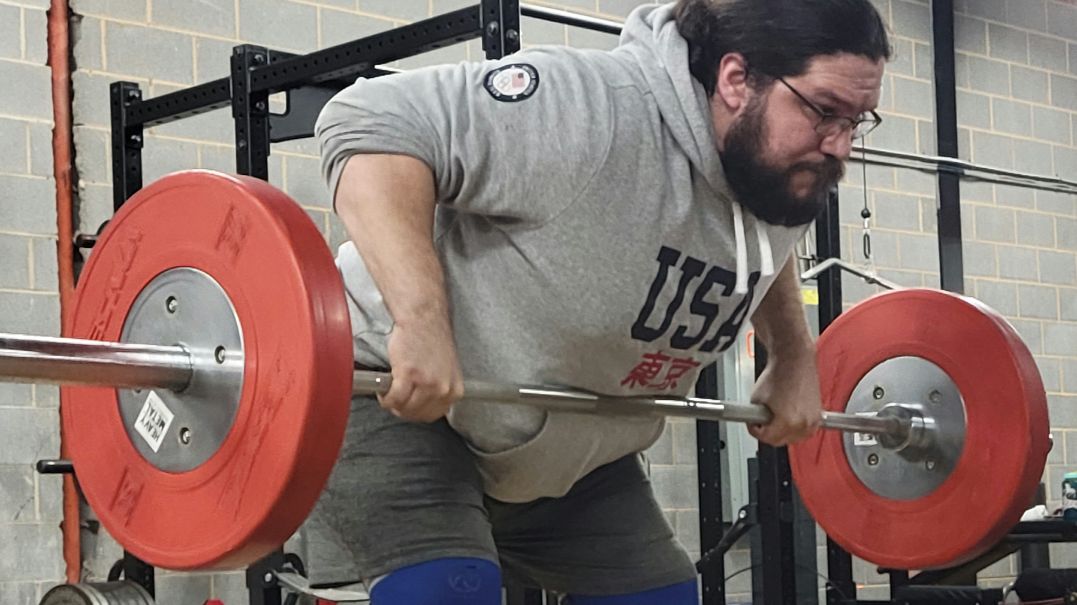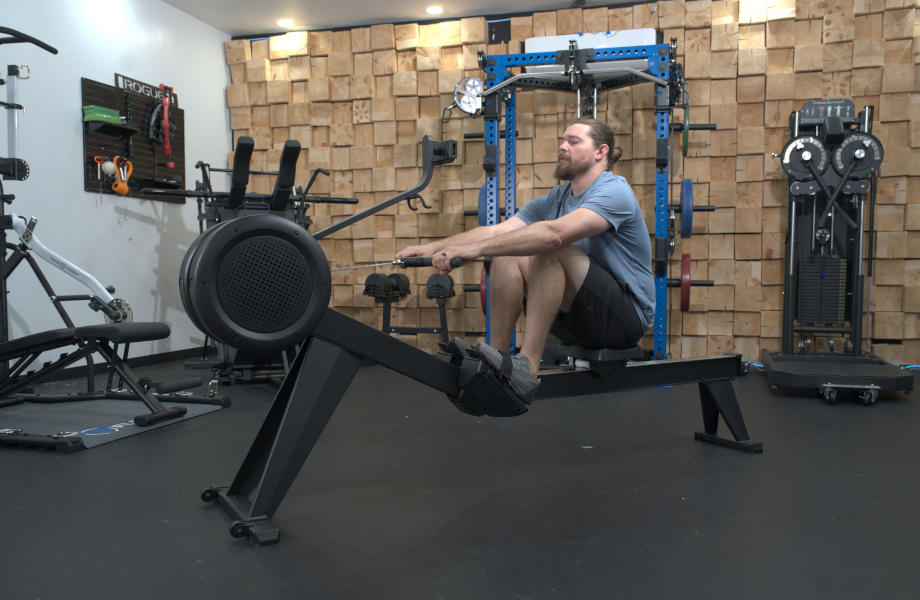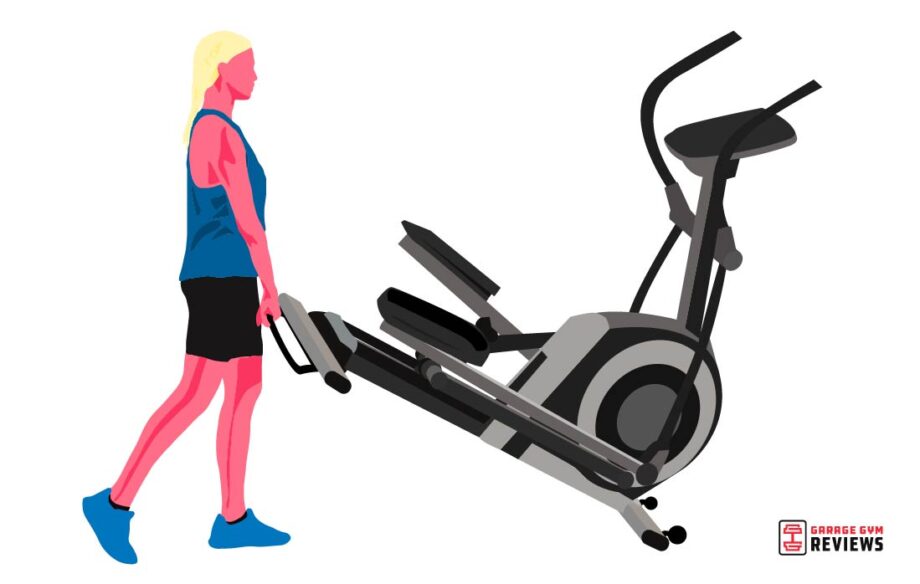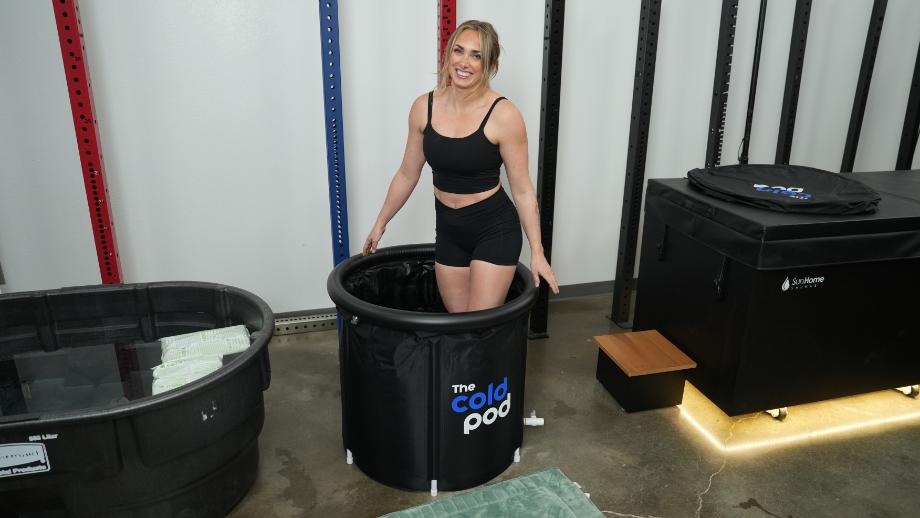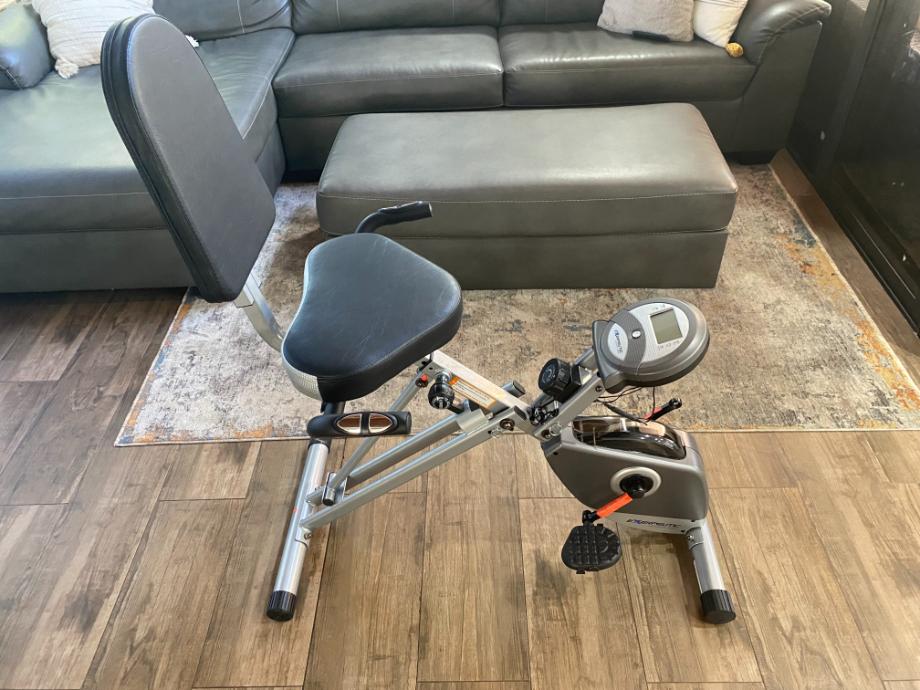The barbell or dumbbell bent-over a row is an excellent back exercise that targets the lower back, upper back, and lats in the hinge position. At the same time, rowing builds incredible back strength and is a great accessory exercise for movements like the barbell deadlift.
However, the bent-over row is not for every lifter. Some haven’t mastered the hinge position, and for some, the hinge position aggravates the lower back muscles.
The bent-over row is a fantastic compound exercise to strengthen the all-important lower back, but when pain is present there, it’s best to go with a bent-over row alternative. Or, if you like the bent-over row and looking for variety, the 10 bent-over row alternatives below will fit the bill.
Strap in and hold on to the barbell with all your might as we dive into the best barbell row alternative exercises, according to this certified personal trainer.
Try These 10 Bent-Over Barbell Row Alternatives
These are excellent bent-over-row exercise variations and fantastic rowing movements in their own right. Depending on your goals and access to equipment, each one deserves a place in your workout routine.
- Pendlay Row
- TRX Inverted Row
- Ring Rows
- Banded Rows
- Single-Arm Dumbbell Rows
- Incline Dumbbell Row
- T-Bar Row
- Seated Cable Row
- Renegade Row
- Yates Row
Pendlay Row
Why Do It: You row the barbell from the floor instead of being bent over where it hovers above the floor. This makes it a friendlier variation on your lower back.
How to Do It:
- Set up similar to a barbell deadlift from the floor.
- Hinge down and take an overhand shoulder-width grip.
- Get your shoulders down and chest up, and explosively pull the barbell towards your sternum.
- Then return the barbell to the floor and reset and repeat for desired repetitions.
Trainer Tip: Go lighter than the barbell bent-over row because the trick is to be explosive. The Pendlay row is not a grinding exercise but a power one.
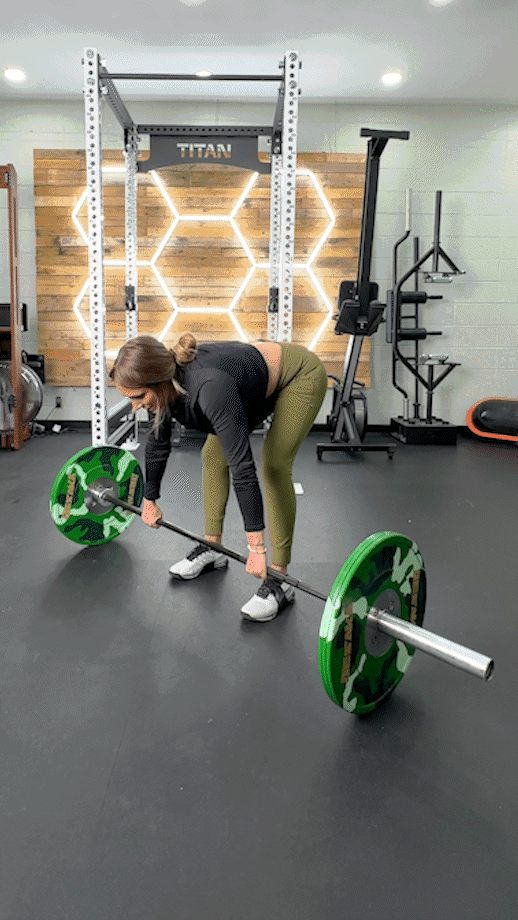
TRX Inverted Row
Why Do It: The beauty of the TRX inverted row and any inverted row variation is it is easily progressed and regressed by changing the angle of the TRX or barbell. Plus, it will build the core strength necessary for pull-ups.
How to Do It:
- Grip the TRX or the barbell with a neutral grip and then hang down directly under the TRX handles.
- Then get your chest up and shoulders down and squeeze your glutes to form a straight line from head to heel.
- Pull yourself up until your shoulder blades are fully contracted and the handles below your chest.
- Slowly lower down, reset, and repeat for desired reps.
Trainer Tip: Barbell inverted rows are great, but the TRX gives you more freedom of movement, especially for your grip.
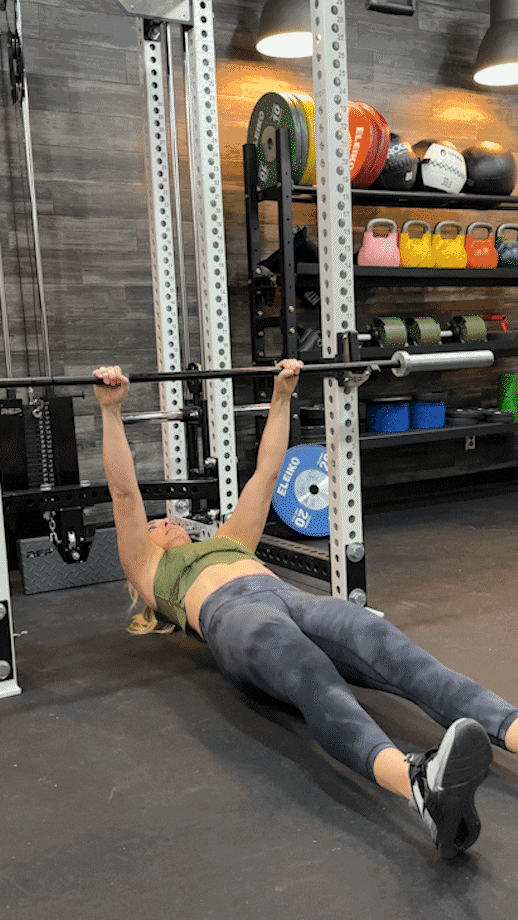
Ring Rows
Why Do It: Like TRX rows, ring rows require more core and shoulder stabilization because of their instability. Plus, the neutral grip is easier on your wrists, elbow, and shoulder joints.
How to Do It:
- Hang a pair of rings around your hip height.
- Grip the rings with a neutral grip.
- Walk your feet out until your body has a 45-degree angle with the floor.
- With your arms extended, get your shoulders down and chest up, and engage your glutes.
- Pull your hands towards your armpit while keeping your body straight.
- Once the rings touch your body, slowly lower yourself down until your elbows are extended and reset and repeat.
Trainer Tip: Make sure your hands are dry, or use lifting chalk with ring rows. Their surface is glossy and a little more challenging to grip.
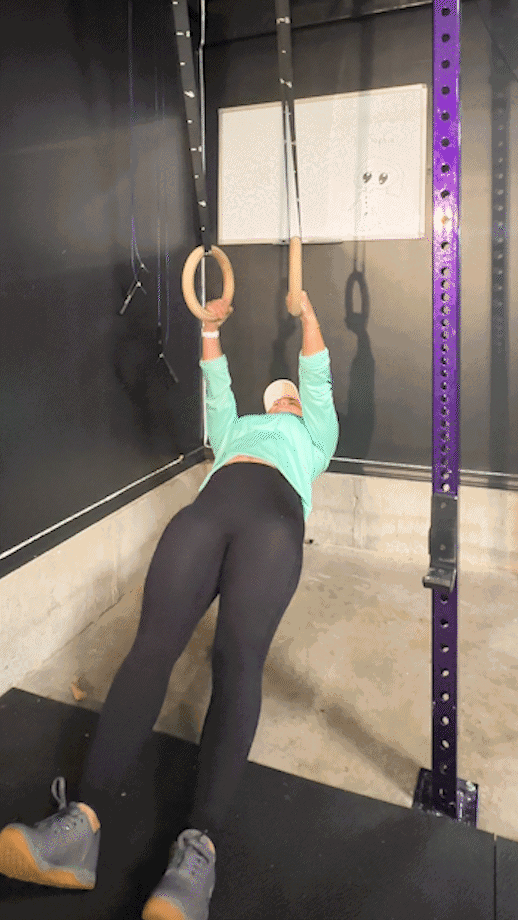
Band Rows
Why Do It: The further the band stretches, the harder it is to lift. This fact helps improve lockout strength, and the accommodating resistance is easier on your joints, allowing you to do more reps.
How to Do It:
- Set up the resistance band just above hip height around a secure anchor point.
- Grip the band handle (or handles) with a neutral grip and walk back until you feel the tension in the band.
- Pull the handles to your sides with your shoulders down and chest up until your shoulder blades are fully contracted.
- Slowly lower to the starting position and reset and repeat.
Trainer Tip: The further the band stretches, the more challenging it is, so judge your intensity wisely.
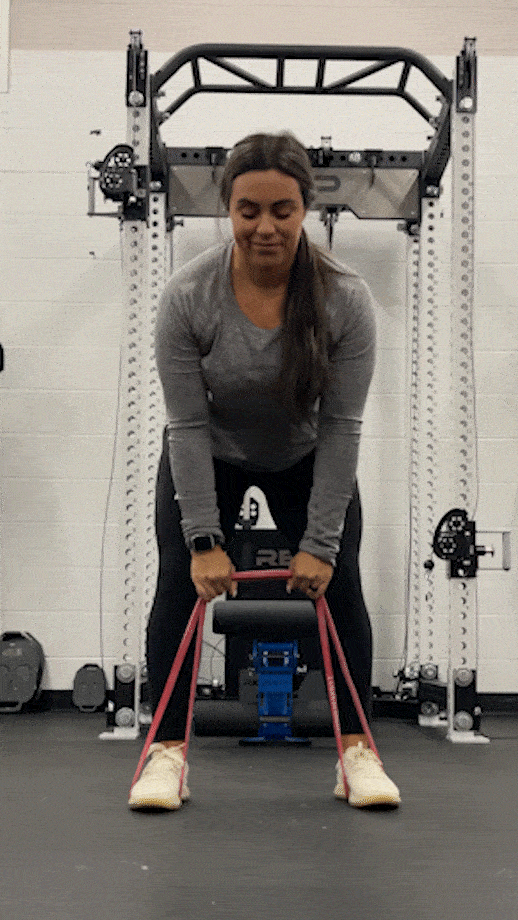
Single-Arm Dumbbell Rows
Why Do It: Unilateral rows like single-arm dumbbell rows will strengthen imbalances between sides and, due to the weight being offset, provide core stability benefits, too, particularly for the obliques.
How to Do It:
Note: There are many single-arm dumbbell row variations, and this is just one way to do it.
- Put your right hand and right knee lengthwise on the weight bench and put your left leg in a comfortable position.
- Grip a dumbbell in your left hand and get your spine in neutral.
- Row the dumbbell towards your left hip until you feel a contraction in your upper back.
- Slowly lower until your elbow is extended and reset and repeat.
Trainer Tip: Ensure a neutral spine no matter the variation and ensure you’re going through a full range of motion.
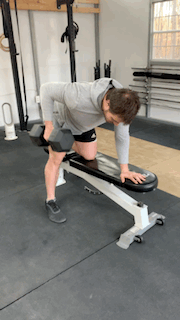
Incline Dumbbell Row
Why Do It: This is otherwise known as the chest-supported row. The beauty of supporting your chest on the bench is that it limits momentum from other muscle groups and encourages better activation from your rhomboids, trapezius, and latissimus dorsi.
How to Do It:
- Set the weight bench and seat to a 45-degree incline with a pair of dumbbells on the floor.
- Sit down, put your upper body on the incline, and grip the dumbbells with your preferred grip.
- Row until your shoulder blades come together, and pause for a second.
- Lower down to the starting position and reset and repeat.
Trainer Tip: Changing the angle of the dumbbell and using an overhand grip, underhand grip, or a neutral grip allows you to hit all the muscle fibers on your upper back and lats.
RELATED: Best Dumbbell Exercises
T-Bar Row
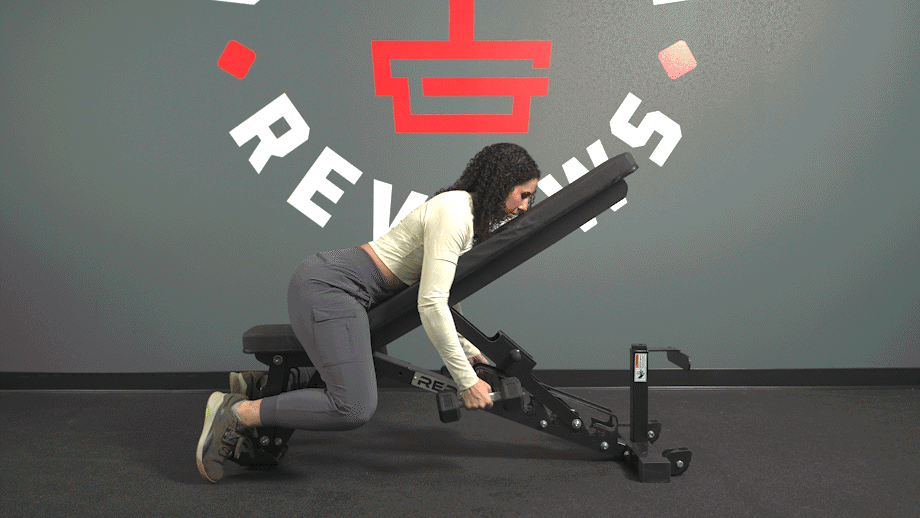
Why Do It: The landmine T-Bar row is an excellent old-school bodybuilding exercise to target your upper back, lats, and posterior delts and to add thickness to the muscles between your shoulder blades.
How to Do It:
- Stand over the bar with a wide stance and hinge down to grip your T-bar attachment.
- Once you have a firm grip, get your shoulders down and chest up.
- Ensure your feet are around 8-12 inches behind the plates.
- Then with both arms extended, pull the handle towards your upper abs.
- Pause at the top of the movement, lower to the starting position, and reset and repeat.
Trainer Tip: There is a tendency to only go through a partial range of motion and to focus purely on load. Ensure a full range of motion for better upper-back gains.
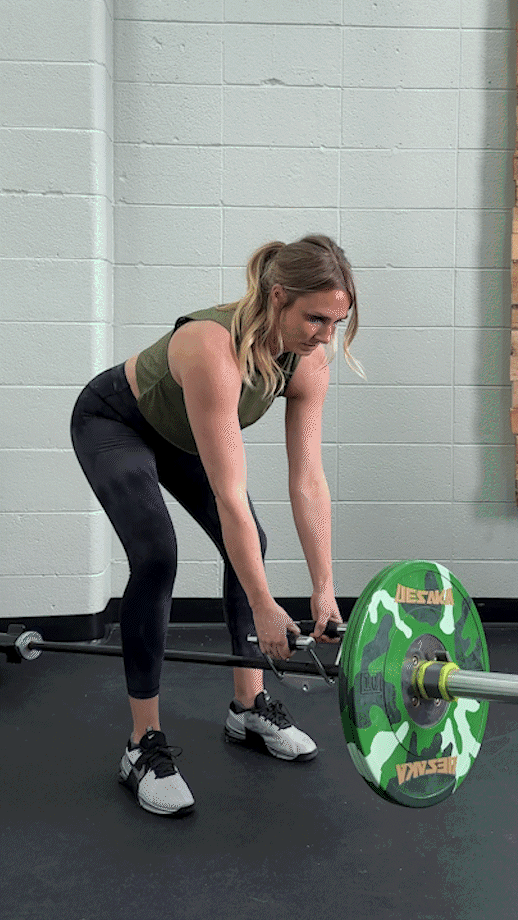
Seated Cable Row
Why Do It: The seated cable row is easier on the lower back because you’re not in the hinge position. The constant tension of the cable machine gives you even tension throughout the entire range of motion, and it’s an excellent exercise to target the hard-to-reach lower lats.
How to Do It:
- Sit down and grip the v-handle (or your preferred attachment) on the cable machine.
- Get your shoulders down and chest up for good posture.
- With your arms extended, row the attachment to your sternum.
- When your shoulder blades are together, pause and lower to the starting position.
- Reset and repeat for desired reps.
Trainer Tip: Reach forward at the end of the rep to get a great stretch and to add more ROM for better gains.
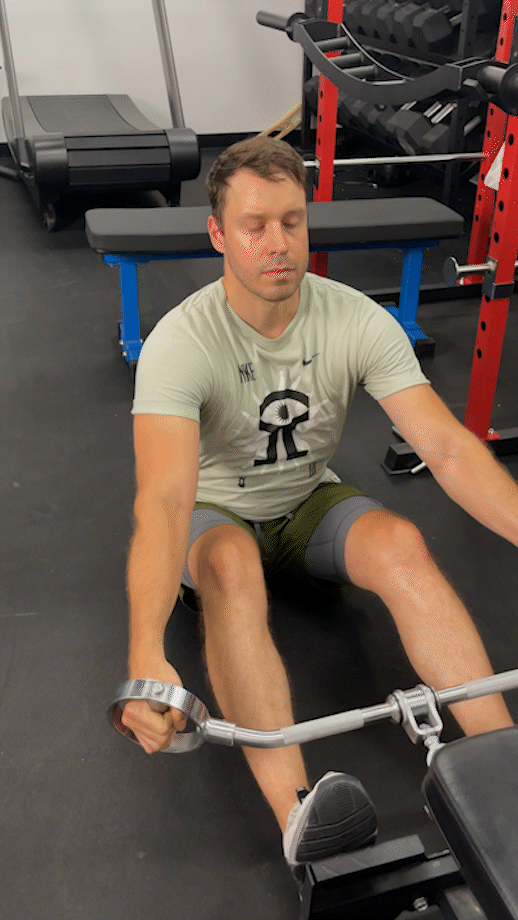
Renegade Row
Why Do It: Renegade rows are not the best exercise to build back strength, but this row variation will help build out-worldly core strength when performed with proper form.
How to Do It:
- Grip two hex dumbbells and set up in a solid front plank position.
- Ensure your feet are wider than hip-width apart to minimize torso rotation.
- Row one dumbbell towards your hip and lower it down.
- Then row the other, lower it down, and keep alternating sides for even reps.
- Keep your back straight through the movement.
Trainer Tip: Renegade rows with hex dumbbells are more manageable, but if you love a challenge, use round dumbbells or kettlebells.
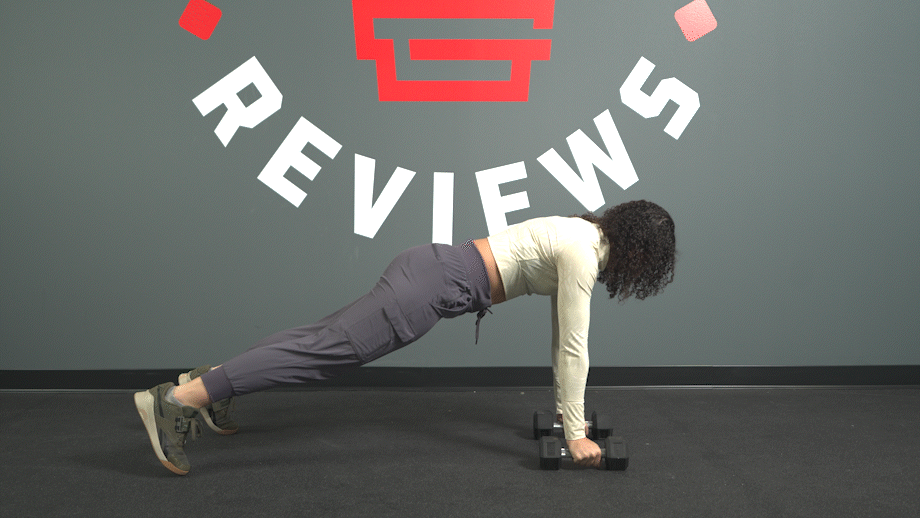
You can also add a push-up and do this version of a renegade row:
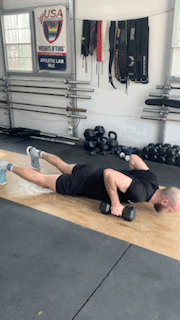
Yates Row
Why Do It: If the barbell bent-over row causes back pain, the Yates row shortens the distance between the load (and body weight) and your base of support. Doing this helps remove the stress off the spinal erectors and reduces the risk of injury to your lower back.
How to Do It:
- Grip the barbell with an underhand shoulder-width grip in the squat rack.
- Unrack, get your shoulders down and chest up, and stand with your feet around hip-width apart.
- With a soft bend in your knees, hinge forward until your torso to a 45-degree angle with the barbell above knee height.
- Pull the bar to your sternum and ensure your elbows are tucked in.
- Pause, lower to the starting position, and reset and repeat.
Trainer Tip: Keeping your shoulders down and chest up will minimize using your upper traps to pull the barbell up.
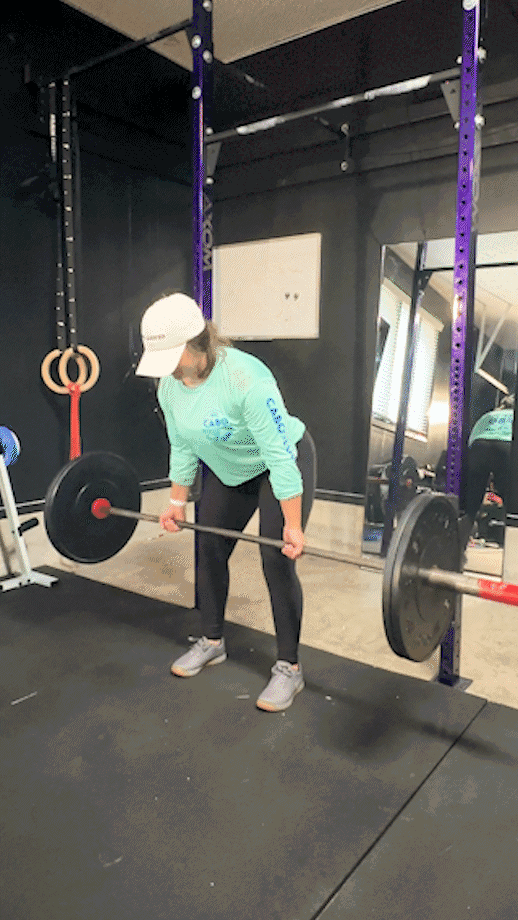
Bent Over Row Alternative: Final Thoughts
When you want to build some serious back size and strength, the bent-over row is one exercise that can take you there. But it’s not the only exercise that will work, especially when bent-over rows are out of the question due to pain or you’re not ready for them yet.
Horizontal rows are still essential in a well-balanced strength program. With these 10 bent-over row alternatives, you’ll get all the back-building benefits of the bent-over row without worrying about pain or technique. Plus, it builds secondary muscles, like biceps, for your flexing pleasure.
Bent-Over Row Alternative: Q&A
Are bent-over rows necessary?
You need plenty of core and lower body strength to perform bent-over rows well, so not everyone can do them. So, as with all good exercises, the bent-over row has regressions to fit the beginner or intermediate lifter. Barbell bent-over rows are a great total-body exercise but aren’t necessary because of the alternatives presented in our in-depth guide to exercises you can use in place of them.
What muscles should bent-over rows work?
More to the point, what muscles doesn’t it work? Being in the hinge position while performing a horizontal row trains the lower back, upper back, lats, posterior deltoids, biceps, forearms, and even your hamstrings.
Is the bent-over row better than the deadlift?
Barbell deadlifts are excellent exercises for building total body strength and setting the table for hypertrophy. The bent-over row is excellent for back-building muscle and for strengthening the bottom position of your deadlift due to improved lower back endurance. They are both excellent exercises, and it depends on your goals whether one is better than the other.
Are bent-over rows for the back or shoulders?
The shoulders, particularly the posterior shoulder, assist the lats in shoulder extension during the bent-over row. But the bent-over row is primarily an exercise to build the upper and lower back and lats. Better exercises, like the overhead press or lateral raise variations, target the shoulders.


